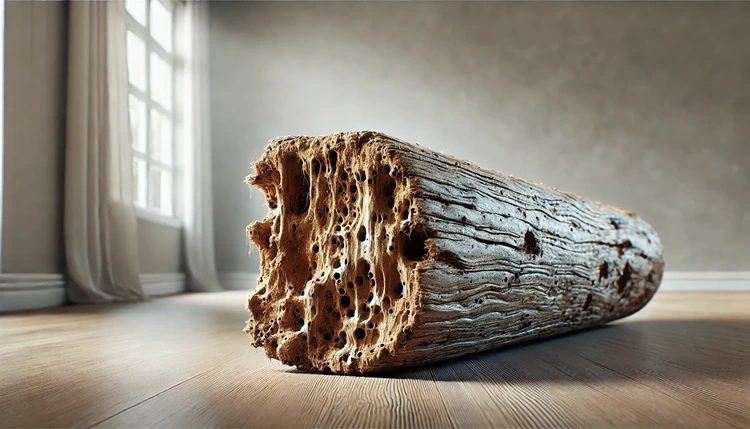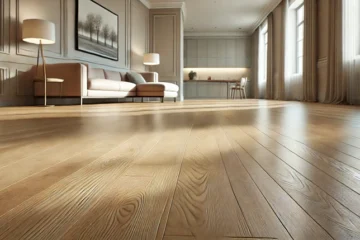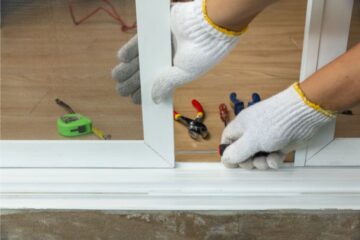How To Tell the Age of Termite Damage

Termites are tiny, sneaky pests that can cause massive destruction to a home, especially if left unchecked. Their main target? Wood. Over time, termites eat away at wooden structures, leaving homes vulnerable to damage. But if you’re trying to figure out how old the damage is, that’s where things can get tricky. Termite damage can vary from fresh to years-old, making it hard to determine when the infestation occurred.
In this guide, we’ll walk through the telltale signs that can help you determine the age of termite damage. By identifying this, you’ll be able to make informed decisions about repairs, treatments, or even legal actions in some cases. And we’ll do it without using overly technical terms that might make things more complicated than they need to be. Ready to get started?
How to Spot Termite Damage
Before you can figure out how old the damage is, you need to be sure that what you’re looking at is termite damage. Termites can cause different kinds of damage, depending on the wood, moisture levels, and how long they’ve been eating away at your home.
- Hollowed-out wood: Termites eat from the inside out, so tap on wooden beams or boards to see if they sound hollow.
- Cracked or bubbling paint: This can be a sign that termites are tunneling underneath.
- Wood that sounds papery: If wood sounds like paper or feels soft, it might be due to termite infestation.
- Mud tubes: These are tunnels termites build to protect themselves as they move from their colony to their food source.
Helpful Hint:
Termites work slowly but steadily. They can go unnoticed for years, causing damage from within. Always conduct regular checks around wooden areas in your home to stay on top of potential infestations.
Can Fresh Termite Damage Be Identified?
Yes, fresh termite damage can be identified. However, knowing what to look for can make all the difference. Here are a few indicators that you’re looking at a recent attack:
- Presence of live termites: If you spot live termites, chances are the damage is fresh. You’ll likely see small, winged insects (called swarmers) or worker termites inside the wood.
- Moist wood: Fresh termite damage often feels damp to the touch. If the wood feels soft or moist, the termites have recently been there.
- Fresh mud tubes: Termites build new mud tubes as they work. If the tubes are wet and soft, the infestation is still active.
Helpful Hint:
Keep an eye out for fresh mud tubes, especially in crawl spaces or near the foundation of your home. Fresh tubes mean the termites are still at work, and it’s time to take action fast!
Difference Between Fresh and Old Termite Damage
| Signs of Fresh Termite Damage | Signs of Old Termite Damage |
|---|---|
| Presence of live termites, soft and moist wood, fresh mud tubes | No live termites, dry and brittle wood, inactive mud tubes |
| Wood may still feel soft when touched, damage is localized | Wood crumbles easily, damage may be extensive and widespread |
| Recent infestation signs, active and ongoing damage | Infestation is likely over, damage occurred in the past |
How to Identify Old Termite Damage
Old termite damage is often harder to identify because the infestation may no longer be active. However, there are a few ways to determine if the damage is from a past problem:
- Dry, brittle wood: Over time, termite damage will dry out, leaving the wood brittle and weak. If the wood crumbles easily, it may have been damaged long ago.
- Inactivity in mud tubes: If you find mud tubes that are dry and crumbly, the termites are likely gone. These tubes will have hardened over time, indicating that the infestation is no longer active.
- No sign of live termites: If there are no termites in sight and the damage appears extensive, it’s possible that the termites have moved on or died off.
Helpful Hint:
If you discover old termite damage, don’t assume you’re in the clear. The termites may have moved to another part of your home or could return in the future. Regular inspections are key to staying termite-free.
How to Tell If Termite Damage is from the Previous Owner
One of the big challenges homeowners face is determining whether termite damage is from their time in the house or if it occurred before they bought the property. Here’s how to tell:
- Check the home inspection report: If you recently bought the home, review the inspection report. Most home inspectors will note signs of termite damage during their review.
- Talk to the previous owner: In some cases, the seller may disclose past termite treatments. If the home was treated for termites, there may be old damage that hasn’t been repaired.
- Look for previous repairs: If the damage seems patched up or if parts of the home appear newer than others, it might be a sign that termite damage occurred under previous ownership.
Knowing whether the damage is old or new can be important when deciding how to move forward with repairs or legal actions.
Does the Extent of the Damage Matter?
When it comes to termite damage, the extent matters a lot. Severe damage may indicate that termites have been present for years, while minor damage could suggest a more recent infestation. Here’s how to judge the extent:
- Minor damage: Small areas of damage, especially to non-structural wood, could be the result of a new infestation.
- Severe damage: If large sections of structural wood are hollowed out or weakened, the termites have likely been at work for a while. This could mean significant repairs are necessary.
What Should You Do If You Find Termite Damage?
Finding termite damage can be unsettling, but it’s important to act quickly. Here’s a step-by-step guide on what to do next:
- Confirm that the damage is from termites and not another wood-destroying insect.
- Hire a professional pest control company to assess the damage and determine if the termites are still active.
- If the infestation is active, begin treatment immediately to prevent further damage.
- Consult a contractor to assess the structural integrity of your home and make any necessary repairs.
- Schedule regular inspections to ensure that the termites don’t come back.
Stats:
Termites cause over $5 billion in property damage in the United States every year. Most homeowners insurance policies do not cover termite damage, making regular inspections crucial.
In conclusion, telling the age of termite damage requires careful observation of both the damage itself and the surrounding signs. Whether the damage is old or new, acting fast is essential to keep your home safe from further destruction.
How Can You Prevent Future Termite Damage?
Prevention is always better than dealing with an active infestation. Here are some ways you can protect your home from future termite damage:
- Reduce moisture: Termites are attracted to moisture, so make sure your home is well-ventilated and that there are no leaky pipes or standing water around the foundation.
- Store wood properly: Keep firewood and lumber away from the exterior of your home. Termites can quickly move from a woodpile into the structural wood of your house.
- Seal cracks: Seal any cracks in your foundation or walls to prevent termites from entering. Even the smallest gaps can be an entry point for them.
- Regular inspections: Schedule yearly termite inspections with a licensed pest control expert. Early detection is key to preventing extensive damage.
Do Termites Return to Previously Treated Areas?
Even if your home has been treated for termites in the past, it doesn’t mean the problem won’t return. Termites can re-infest areas where there’s moisture and food (wood). That’s why it’s crucial to follow preventive measures and keep up with regular inspections.
Additionally, some treatments last longer than others. Liquid barrier treatments, for example, can offer protection for up to five years, while baiting systems may need to be checked more frequently. If your home was treated years ago, it’s a good idea to consult a pest control professional to ensure that the barriers are still effective.
Can You Fix Termite Damage Yourself?
Minor termite damage can sometimes be repaired by the homeowner. If the damage is localized and hasn’t affected the structural integrity of your home, you might be able to replace or repair the damaged wood yourself. However, if the damage is severe or affects the foundation or support beams, it’s best to hire a professional contractor to ensure that your home is safe.
Stats:
According to a national study, over 600,000 homes are affected by termites each year. On average, homeowners spend about $3,000 on termite repairs, but severe cases can cost much more.
When Should You Call a Professional?
If you suspect termite damage, it’s always a good idea to call in a professional. Even if the damage appears minor, a pest control expert can assess the situation and determine whether the infestation is still active. They can also advise on the best course of action to prevent future infestations.
In cases where the damage is structural, a licensed contractor will be needed to repair or replace the affected areas. Don’t wait until the damage gets worse—addressing the issue early can save you thousands of dollars in repair costs.
FAQs
Final Thoughts
Identifying termite damage and determining its age is essential for preventing further destruction and making necessary repairs. From recognizing signs of fresh and old termite damage to taking steps for prevention, understanding termite activity helps you stay ahead of costly repairs. Remember, regular inspections and proactive measures are key in keeping your home termite-free. If you find termite damage, act quickly by calling in the professionals. By staying informed and vigilant, you can safeguard your home from future infestations and protect its value for years to come.


